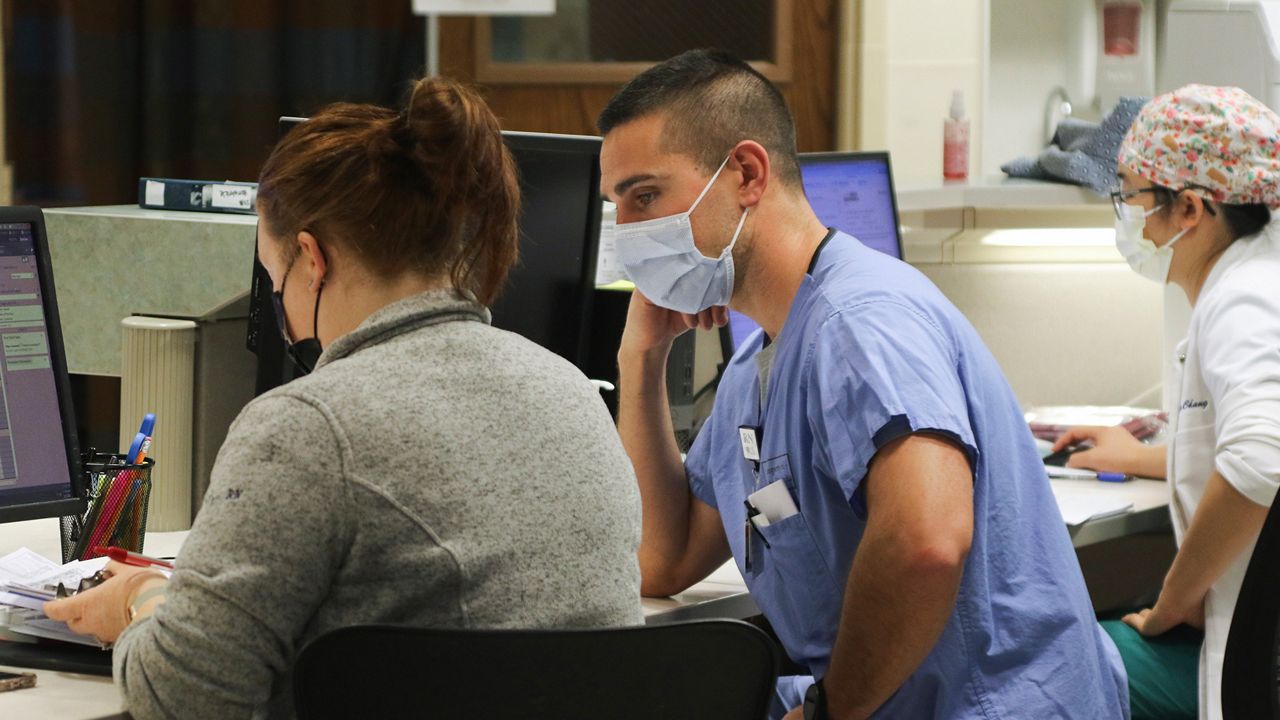COLUMBUS, Ohio — COVID-19 cases in the state increased for a fifth consecutive week in an Ohio Department of Health update Thursday that showed the highest rates of spread in and around the Columbus and Cleveland areas.
What You Need To Know
- COVID-19 cases continue to increase in Ohio, but all 88 counties remain green per the CDC
- The latest state data shows central and northeast Ohio counties have the highest case rates
- Health officials said the rebound in cases could be a product of the changing variant landscape
The weekly report of 11,013 cases is a significant increase from the state’s April 1 report of just 3,103 weekly COVID-19 cases.
Despite the trends, all 88 Ohio counties remain in the green on the Centers for Disease Control and Prevention’s Community Levels map, which means the agency does not recommend masking.
Butler County Health Commissioner Erik Balster said it’s quite possible Ohio counties will move into the higher transmission tiers if the trends in the state continue.
“We went from obviously a really high point with omicron in the winter time to a pretty drastic drop in the last couple of months, and right now we might be seeing kind of a rebound effect of just perhaps the natural course of things, or maybe another rise,” he said.
In Butler County, the positivity rate has risen from about 1.5% a few weeks back up to 8.7% this week, Balster said, but he remains hopeful we’re reaching an endemic stage of COVID-19 where we won’t see another massive spike in serious disease.
“The lack of booster uptake is perhaps causing some of the numbers to jump. It's probably at least contributing to it, and then I think as warmer weather comes around, more people are out and interacting more and being more social, and I can't help but think that that has some impact on it,” Balster said.
Health officials have also noted the emergence of the BA.2 subvariant of omicron coincided with the reversal of the downward trends that followed the omicron wave, and Balster said Ohio is now dealing with another subvariant known as BA.2.12.1.
The CDC’s variant tracker shows this subvariant representing about 36.5% of U.S. cases, while BA.2 remains dominant at 61.9% of cases.
The latest state data shows case rates per 100,000 residents over the last two weeks are highest in northeast Ohio and central Ohio counties around the Columbus and Cleveland metro areas.
Hamilton County officials said Tuesday cases are also rising in the Cincinnati area as they announced new community testing sites where all residents, even those who are uninsured, can get free testing on a walk-up basis. A federal COVID-19 funding gap has made it more difficult for the uninsured to access free COVID-19 services.
“COVID-19 is still with us, testing is a big part of the solution,” Hamilton County Commission President Stephanie Summerow Dumas said. “As the federal programs paying for some testing and vaccinations are coming to an end, Hamilton County continues to provide free testing and free vaccinations through Hamilton County Public Health, for those who are uninsured."
COVID-19 deaths in Ohio have continued to decline in recent weeks, with the state reporting 65 new deaths in Thursday’s weekly update.
“That's a positive sign that vaccinations are working and that hopefully the virus is losing its deadliness and just becoming more infectious,” Balster said.
Hospitalizations have increased in Ohio over the last few weeks. On Thursday, 427 COVID-19 patients were hospitalized, a 45% increase since April 18 when 295 patients were in the hospital. ICU numbers have increased by 61% since April 17, rising to 58.
Balster said they are seeing the uptake in cases across age groups and across the county.
“There are little clusters here and there, but kind of fortunately, it's more spread out, at least more than it was, you know, going back a year ago when we could see, for example, a school or a long-term care facility have significant numbers,” he said.



